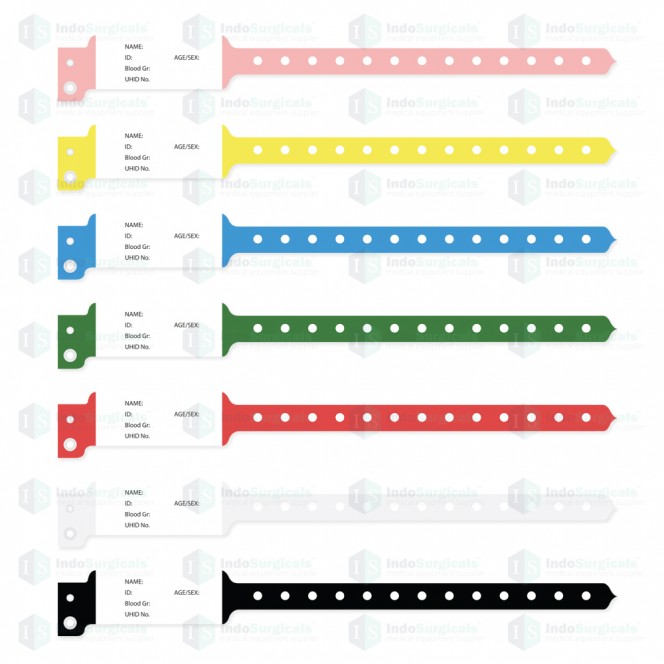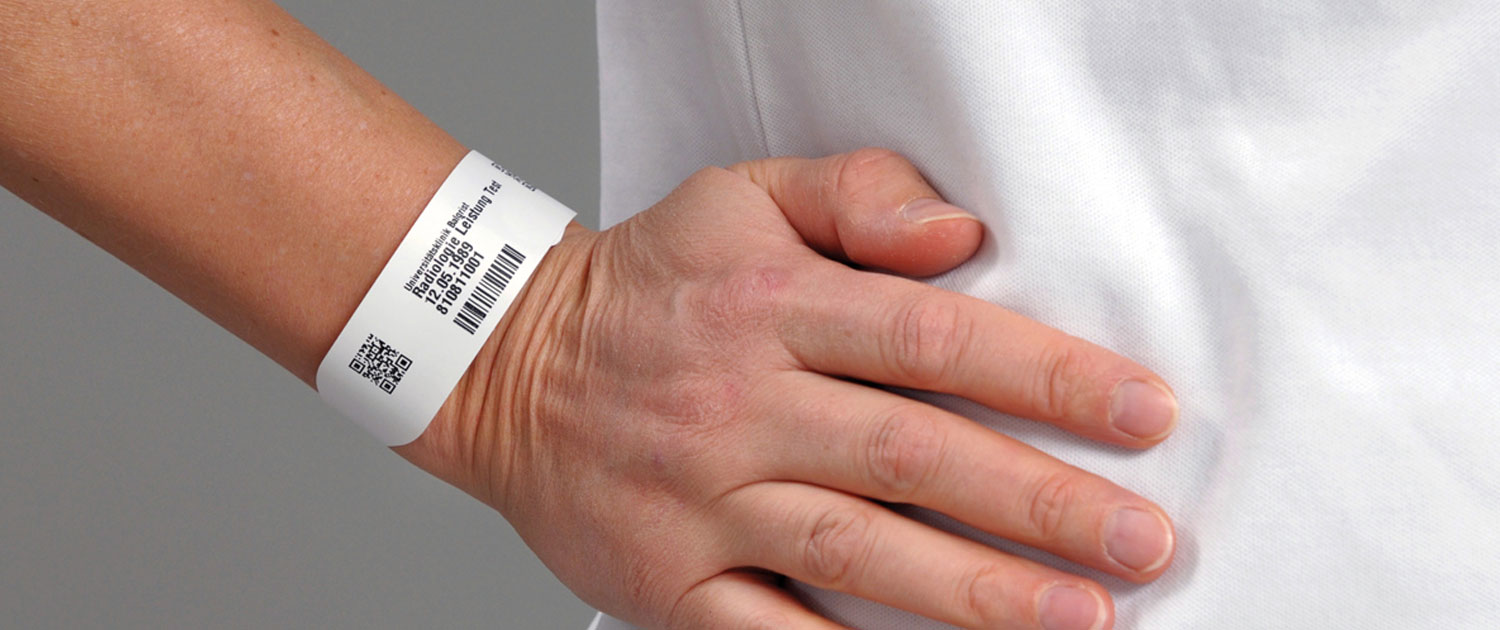Why Investing in a Top-Notch Patient Identification Band is Crucial for Medical Institutions
Why Investing in a Top-Notch Patient Identification Band is Crucial for Medical Institutions
Blog Article
Discovering the Numerous Sorts Of Patient Identification Band Utilized in Medical Facilities
In the detailed globe of healthcare, the essential duty of Patient Identification bands usually goes undetected. These bands, varying from straightforward paper wristbands to innovative RFID bands, form the foundation of Patient safety procedures, guaranteeing accuracy in Patient Identification. Yet, the substantial diversity of these bands, each with its unique advantages and limitations, is usually ignored. As we navigate via this topic, one might acquire understanding into the refined intricacies and vital importance of such bands in clinical centers.
Understanding the Value of Patient Identification Bands
While they may appear like plain devices, Patient Identification bands play a vital duty in clinical centers. These bands serve as a crucial tool for validating Patient identity, avoiding medical mistakes connected to misidentification. Patient Identification bands additionally help in improving administrative jobs, making sure precise record-keeping and billing.
Traditional Paper Wristbands: Their Use and Limitations
Standard paper wristbands have been a staple in Patient Identification throughout different medical centers. While their usage prevails, they harbor certain limitations that might affect their effectiveness in Patient management. This area will concentrate on the extent of their application and the fundamental drawbacks linked with their use.
Paper Wristbands: Use Scope
In the world of Patient Identification, paper wristbands have long held an essential function. These bands are normally made use of in outpatient setups, where the Patient's keep is temporary. Despite developments in innovation, the simple paper wristband stays a trusted and cost-efficient service for Patient Identification in numerous medical care circumstances.
Limitations of Paper Wristbands
Regardless of their prevalent use, paper wristbands are not without their downsides. Their physical durability is one of the substantial constraints. Direct exposure to water, sweat, or misuse can make them unreadable or even cause them to disintegrate. On top of that, paper wristbands often do not have the technical abilities of more modern choices, such as barcoding or RFID chips, restricting their performance to simply displaying created details. The failure to update or change the information on the wristband is one more shortcoming. If the information is handwritten, legibility can be endangered, leading to prospective misidentification. Finally, paper wristbands can cause pain or skin inflammation to some clients, especially when used for extended durations.
Barcoded Wristbands: Advancements in Patient Identification
While Patient Identification has long been a vital element of health care, the development of barcoded wristbands symbolizes a substantial jump ahead. These bands take advantage of the simpleness of barcoding innovation, enabling for Patient info to be rapidly scanned and accessed. They improve the speed and accuracy of Patient Identification, minimizing the danger of medical errors associated to misidentification.
Radio Regularity Identification (RFID) Bands: a Step In The Direction Of Futuristic Medical Care
The advancement of Patient Identification bands has actually produced the appearance of Superhigh frequency Identification (RFID) Bands (patient identification band). These innovative devices existing crucial advantages for health care facilities, offering an extra efficient and technologically advanced methods of Patient Identification. The execution of RFID in healthcare is a considerable action towards a more advanced method to Patient administration and safety
Recognizing RFID Bands

RFID Bands: Key Benefits
Embracing a future where technology and medical care combine, superhigh frequency Identification bands offer numerous vital benefits. Mainly, these bands improve Patient security by offering accurate, rapid Identification, thus reducing clinical errors. RFID bands can store a substantial quantity of Patient information, including case history and allergies, enabling individualized care. They also enhance administrative jobs, as the automated data entry changes manual procedures, enhancing performance and minimizing paperwork. In addition, RFID bands use real-time tracking of individuals, crucial in high-risk settings such as surgical procedure or intensive treatment. Lastly, these bands are sturdy and resistant to environmental variables, guaranteeing regular functionality. On the whole, RFID bands represent a considerable innovation in Patient Identification innovation, profiting both patients and health care carriers.
Implementing RFID in Healthcare
As we step into a technologically advanced era, the implementation of RFID bands in healthcare becomes increasingly vital. These bands offer a seamless way to track and recognize people, guaranteeing their safety and security and boosting effectiveness in therapy procedures. RFID bands provide various advantages over traditional Identification approaches. They can save a huge quantity of data, including the Patient's clinical background and treatment plans, which can be conveniently accessed by medical care carriers. This information assists doctors make educated choices relating to the Patient's therapy strategy. Additionally, RFID bands decrease medical mistakes by supplying accurate Patient Identification, which is essential in preventing misdiagnosis or incorrect medication management. Hence, the application of RFID bands is a significant action towards improving Patient security check over here and medical care shipment.

Color-Coded Wristbands: Helping in Quick and Accurate Diagnosis
In the bustling environment of a clinical center, color-coded wristbands have actually become vital tools for swift and accurate Identification of an individual's medical condition. These wristbands, put on by people, lug certain colors that match to various medical problems or conditions. For instance, red can suggest allergy threats, while yellow may signify a loss danger. This system is made to provide immediate aesthetic cues to medical care suppliers, enhancing Patient safety and care top quality. In emergency scenarios, making use of these wristbands enables fast decision-making. The performance of color-coded wristbands depends on the uniformity of color analysis across health care establishments, requiring typical criteria for consistent application.
Methods for Reliable Execution and Management of Patient ID Bands
Achieving optimal use Patient Identification bands requires a well-structured method for their application and monitoring. The initial step entails training all wellness employees on the relevance visite site of appropriately using and reviewing these bands. Health centers need to systematize the usage of ID bands across all departments, guaranteeing uniformity and decreasing discrepancies. Regular audits should be performed to validate adherence to plans and to remedy any inconsistencies. Patient education and learning is likewise vital; clients should understand the purpose of the bands and the demand for their continuous wear. patient identification band. Finally, it's vital to have a backup strategy in location, such as barcode scanning or biometrics, to ensure that Patient Identification is never ever helpful site endangered.
Conclusion
Patient Identification bands are crucial in clinical facilities to make sure safety and accuracy. Typical paper, barcoded, RFID, and color-coded wristbands each hold distinct benefits, varying from cost-effectiveness to sophisticated information storage space and instant clinical signals. Effective application and monitoring of these bands can considerably lower medical errors, improve performance, and improve general Patient treatment. Hence, understanding and utilizing these Identification tools is extremely important for maintaining high standards in health care.
These bands, varying from basic paper wristbands to innovative RFID bands, create the foundation of Patient safety protocols, guaranteeing precision in Patient Identification.The evolution of Patient Identification bands has actually brought concerning the appearance of Radio Regularity Identification (RFID) Bands. Generally, RFID bands stand for a considerable improvement in Patient Identification innovation, benefiting both clients and health care companies.
RFID bands minimize medical errors by offering accurate Patient Identification, which is critical in protecting against misdiagnosis or incorrect medication administration. Patient education is also crucial; patients have to recognize the function of the bands and the requirement for their constant wear.
Report this page